Posted: January 12th, 2016 | No Comments »
I’m hoping someone out there might have access to an archive of old Liberty Magazines – perhaps online (none of my libraries have the online archive) or a stack in a garage somewhere. We’re looking for January 1935 because who could resist this tale…
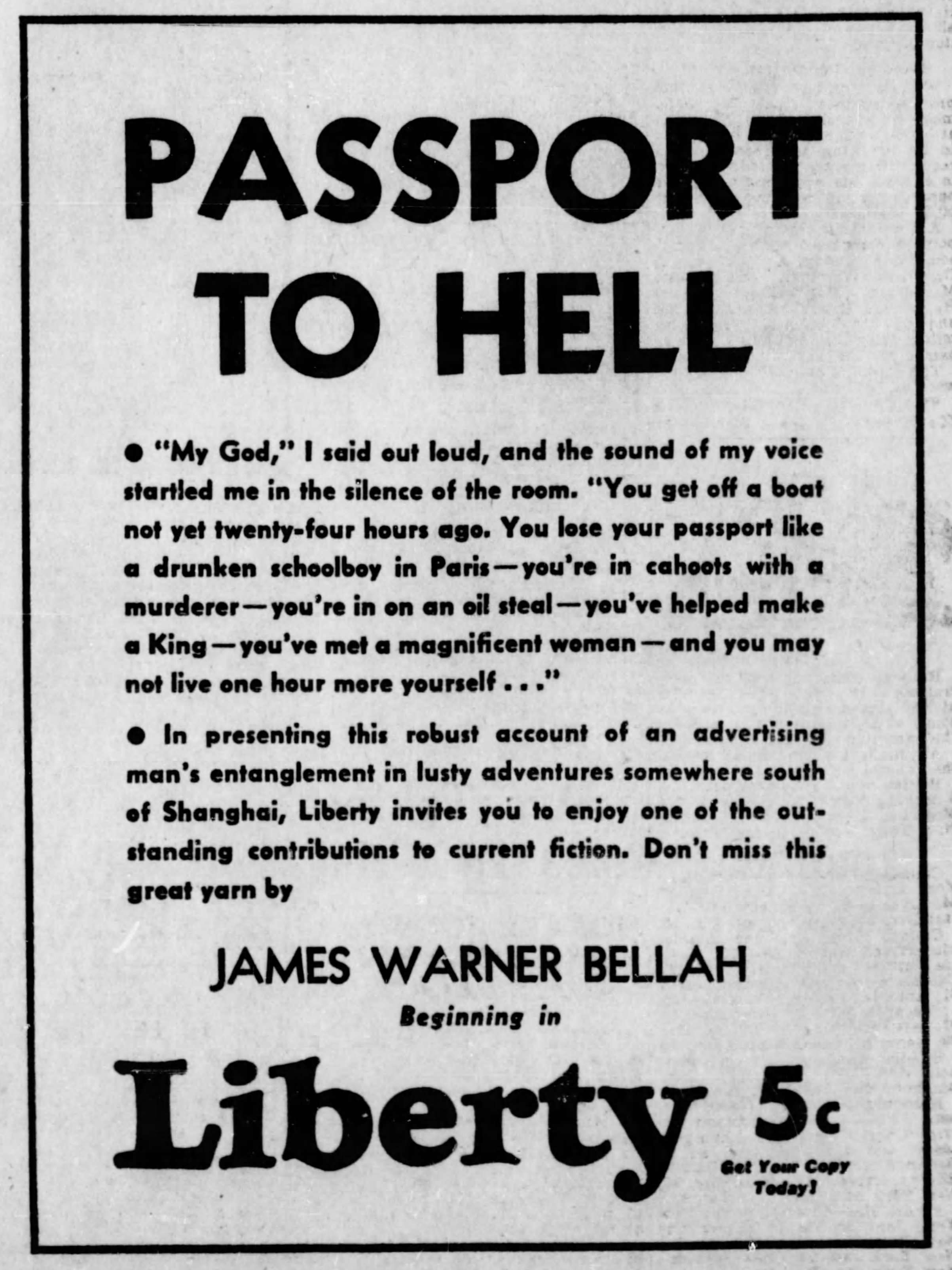
James Warner Bellah was better known for his westerns – the Virginian series, Fort Apache, She Wore a Yellow Ribbon, the Man Who Shot Liberty Valance, Rio Grande etc – but in 1935 he took a little excursion “somewhere south of Shanghai” for his series Passport to Hell. I don’t think Warner Bellah had any direct experience of China – though later in WW2 he did serve in the Far East. Passport to Hell ran over several issues of Liberty from January 1935 (starting in the 12th January issues) and running through to late February in (I think) seven episodes, all with illustrations by Harry T. Fisk and decorations by Carl Pfeufer.
Anyone got copies?
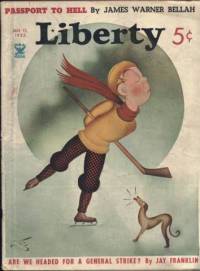 The first episode in the January 12th 1935 issue of Liberty
The first episode in the January 12th 1935 issue of Liberty
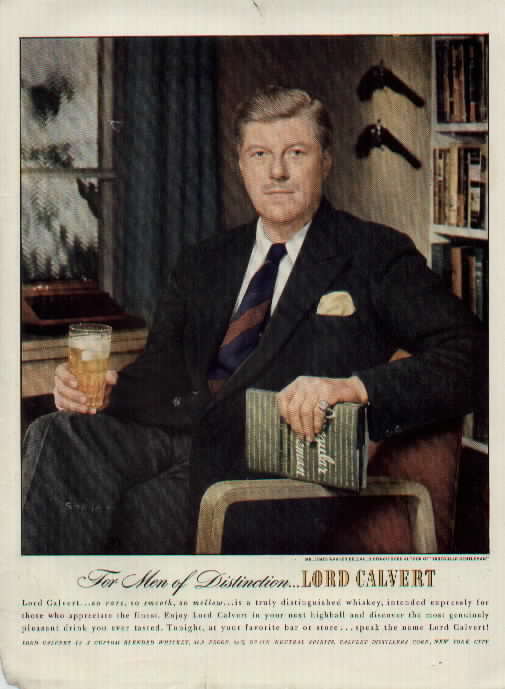 James Warner Bellah advertising Lord Calvert whiskey
James Warner Bellah advertising Lord Calvert whiskey
Posted: January 11th, 2016 | No Comments »
Xing Hang’s history of the Zhang clan of merchants and militarists…and their rivals the East India Company…looks like a good read….
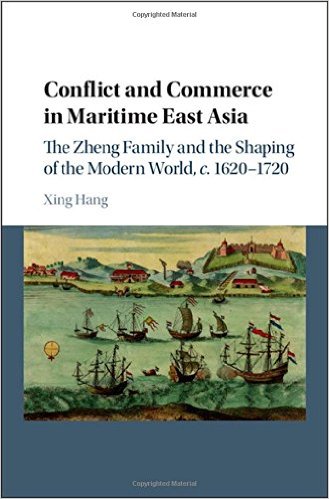
The Zheng family of merchants and militarists emerged from the tumultuous seventeenth century amid a severe economic depression, a harrowing dynastic transition from the ethnic Chinese Ming to the Manchu Qing, and the first wave of European expansion into East Asia. Under four generations of leaders over six decades, the Zheng had come to dominate trade across the China Seas. Their average annual earnings matched, and at times exceeded, those of their fiercest rivals: the Dutch East India Company. Although nominally loyal to the Ming in its doomed struggle against the Manchus, the Zheng eventually forged an autonomous territorial state based on Taiwan with the potential to encompass the family’s entire economic sphere of influence. Through the story of the Zheng, Xing Hang provides a fresh perspective on the economic divergence of early modern China from western Europe, its twenty-first-century resurgence, and the meaning of a Chinese identity outside China.
Posted: January 10th, 2016 | No Comments »
Having posted on the fascinating subject of Chinese typewriters before – and Lin Yutang’s involvement in their development – this exhibition piqued my interest. The details are all here.
The Chinese Typewriter: The Art and Science of East Asian Information Technology
January 11, 2016 – September 12, 2016
Lathrop East Asia Library, Stanford
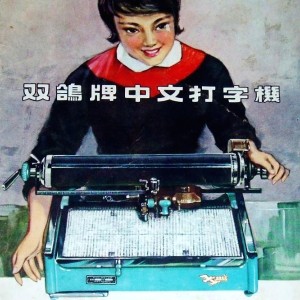
Posted: January 9th, 2016 | No Comments »
Stephen Craft’s American Justice in Taiwan is centred on a murder of a Chinese officer by an American one and the riots and implications for Taiwan-US relations stemming from that…

On May 23, 1957, US Army Sergeant Robert Reynolds was acquitted of murdering Chinese officer Liu Ziran in Taiwan. Reynolds did not deny shooting Liu but claimed self-defense and, like all members of US military assistance and advisory groups, was protected under diplomatic immunity. Reynolds’s acquittal sparked a series of riots across Taiwan that became an international crisis for the Eisenhower administration and raised serious questions about the legal status of US military forces positioned around the world.
In American Justice in Taiwan, author Stephen G. Craft provides the first comprehensive study of the causes and consequences of the Reynolds trial and the ensuing protests. After more than a century of what they perceived as unfair treaties imposed by Western nations, the Taiwanese regarded the special legal status of resident American personnel with extreme distrust. While Eisenhower and his advisers considered Taiwan to be a vital ally against Chinese communism, the US believed that the Taiwanese government had instigated the unrest in order to protest the verdict and demand legal jurisdiction over GIs. Regardless, the events that transpired in 1957 exposed the enormous difficulty of applying the US’s Uniform Code of Military Justice (UCMJ) across cultures.
Employing meticulous research from both Western and Chinese archives, Craft demonstrates that the riots were only anti-American in that the Taiwanese rejected the UCMJ, the affording of diplomatic immunity to occupying US forces, and the military courts’ interpretation of self-defense. His compelling study provides a new lens through which to examine US–Taiwan relations in the 1950s, US policy in Asia, and the incredibly charged and complex question of the legal status of US troops on foreign soil.
Posted: January 8th, 2016 | 2 Comments »
In 1938 the celebrated Cooling Gallery in London at 92 New Bond Street launched a new exhibition with a new artist – a Chinese artist called Plato Chan, who was just 8-years old. Plato’s art was put to a good use – the publisher Victor Gollancz organised Palto’s shows in London to raise funds for the China Campaign Committee.
Plato Chan’s father was in the Chinese diplomatic service and the family traveled all over Europe and Asia, living in Germany, France, England, Greece, India and China, and many other places. In 1938, after the Japanese invasion of China and just before the onset of war in Europe the Chan’s found themselves posted to the Chinese Embassy in London on Portland Place. It seems his mother, Madame Chih-Yi Chan, was his greatest publicist – his father seems to have remained somewhat more in the background. He also collaborated with his sister Christina. As to his slightly odd name – Mrs. Chan explained that in 1931, the year Plato was born, a new planet was discovered. Plato’s parents regarded this as something of a portent. Slightly odd as it was Pluto that was discovered in 1930, not Plato.
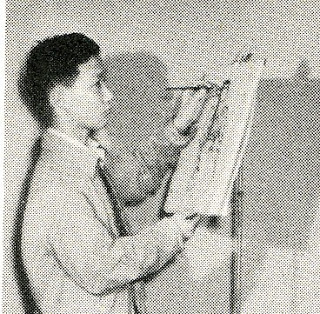 Plato Chan’s work was actually quite popular – Mollie Panter-Downes, the author of the New Yorker’s “Letter from London” during the war, attended a 1939 show of Plato’s at Coolings and was impressed with both the art and the good cause. He had quite a career – he is said to have started painting at just 18 months and reputedly began designing patterns for French fabric companies before the war (i.e. when he was about 6 or 7!!). He also exhibited in Paris and elsewhere in Europe, as well as London, and, it was claimed, painted a portrait of Elizabeth Bowes-Lyon (Queen Elizabeth then, later the Queen Mother) – though I have no idea where that portrait is now. The story goes that Plato hand-delivered it to Buckingham Palace. When World War Two broke out I think the Chan family was at the Chinese embassy in Berlin and Plato’s father was sent to an internment camp in Germany. Plato, his sister Christina and and the rest of the family, went to New York. It was there that his mother adapted a traditional Chinese tale for her son to illustrate. The Good Luck Horse was published in 1943, when Plato was barely thirteen years old.
Plato Chan’s work was actually quite popular – Mollie Panter-Downes, the author of the New Yorker’s “Letter from London” during the war, attended a 1939 show of Plato’s at Coolings and was impressed with both the art and the good cause. He had quite a career – he is said to have started painting at just 18 months and reputedly began designing patterns for French fabric companies before the war (i.e. when he was about 6 or 7!!). He also exhibited in Paris and elsewhere in Europe, as well as London, and, it was claimed, painted a portrait of Elizabeth Bowes-Lyon (Queen Elizabeth then, later the Queen Mother) – though I have no idea where that portrait is now. The story goes that Plato hand-delivered it to Buckingham Palace. When World War Two broke out I think the Chan family was at the Chinese embassy in Berlin and Plato’s father was sent to an internment camp in Germany. Plato, his sister Christina and and the rest of the family, went to New York. It was there that his mother adapted a traditional Chinese tale for her son to illustrate. The Good Luck Horse was published in 1943, when Plato was barely thirteen years old.



He later illustrated another adaptation of a traditional Chinese tale – The Magic Monkey – in conjunction with his sister…
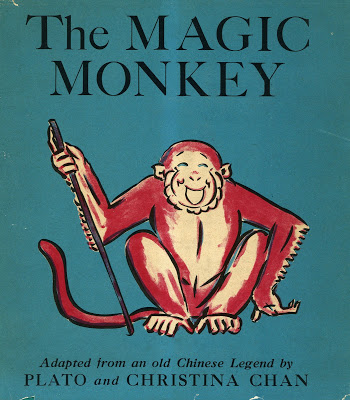


I believe Plato later attended Columbia University in New York and died, aged 75, in Philadelphia in 2006.
PS: for the London history folk – here’s the block of 92-94 block of New Bond Street in 1953. Coolings was in the rooms above the shops. 92 is now a branch of the shirtmakers TM Lewin…
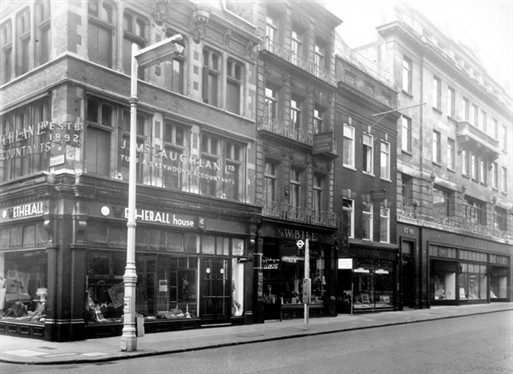
Posted: January 8th, 2016 | 1 Comment »
Pamela Werner – 7/2/17 – 8/1/37

Posted: January 7th, 2016 | No Comments »
I noted yesterday having just read Mollie Panter-Downes’s wartime London diaries. I wish I’d read them a bit sooner. Last year I wrote a couple of articles for The Diplomat magazine to chime with the 70th anniversary of the end of World War Two in Asia and the fact that with the shake out of the leading cliques across the continent in 1945 and the blow done to European colonialism in the region things would never be the same again…The Lingering Ghosts of World War Two in Asia and The Rise of Asia’s Post-War Political Dynasties.
At the time I was keen to try and recall an apposite quote from someone in Europe acknowledging this at the time it was happening. I think I did recall one from Malraux, but Panter-Downes (below) was even more succinct in March 1942….
“Few intelligent Britons think that (post-war) Asia will settle down into the cosy old pattern of Empire, with mad dogs and Englishmen in sole enjoyment of the midday sun.”


Posted: January 7th, 2016 | No Comments »
I read Mollie Panter-Downes’s wonderful London War Notes over the Christmas break. They are essentially her diary of the war years from London which she wrote for Harold Ross, the editor of the New Yorker and that became her regular “Letter from London”. One small, fun China anecdote….
Towards the end of 1944, as the war, was starting to draw to a close and the German bombing raids on London slowed, the city was flooded with builders brought in from all over southern England to help get bomb damaged housing habitable again and ease London’s chronic housing shortage. Of course these builders needed to be housed somewhere themselves while they were working in the capital. One designated rest centre for the workers was the rooms of the Chinese collection at the V&A in South Kensington.
Now while you may like to imagine a bunch of burly patriotic builders sitting amid the Ming Vases and Qing urns having a cup of tea and a bacon butty after a hard day putting roofs back on houses they probably didn’t. During World War II most of the V&A’s collections were evacuated, to the Aldwych Underground tunnel, to Montacute House in Somerset and to Westwood Quarry near Bradford-on-Avon, Wiltshire.
However, the builders in the Chinese rooms may not have been lonely. The RAF had a canteen in the V&A up and running for tired fliers in town and other galleries were home to children evacuated for the duration from Gibraltar. So instead of sitting with a pipe at day’s end ruminating on the dynasties of China the poor blokes were probably kept awake by screaming children running up and down the empty corridors.
And perhaps the V&A was always so safe….
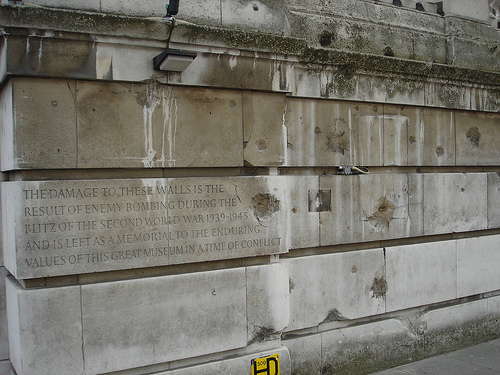
 The first episode in the January 12th 1935 issue of Liberty
The first episode in the January 12th 1935 issue of Liberty James Warner Bellah advertising Lord Calvert whiskey
James Warner Bellah advertising Lord Calvert whiskey














